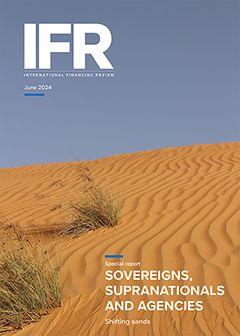Shifting sands: Thoughts were that by this stage in the cycle, interest rates around the globe would be on a clear downward trajectory. But what once appeared a well-defined path has been obscured by the shifting sands of geopolitical and economic uncertainty.
Pre-existing troublesome situations that needed to be resolved have not been – and more have been added. The war in Ukraine drags on, while the Israeli-Palestinian conflict has reopened old wounds. Other potential flashpoints drift in and out of news reports, suitable solutions seemingly just out of reach.
A year that was always going to see a swathe of elections covering just about every corner of the world has seen additional polls announced – some more unexpected than others – and the unknown outcomes weigh heavily on markets. When known, they sometimes appear even more of a burden.
Sticky inflation that has conspired to remain higher for longer than many had anticipated mean that interest rates have too. Economic data releases have on occasion teased but have for the most part failed to paint the picture required for the cutting cycle to commence.
From Australia to the USA, by way of the UK, hopes have been dashed and expectations amended on a number of occasions. Predictions have come and gone – and for the most part eventually proved to be somewhat wide of the mark.
To the surprise of some, it was the European Central Bank that made the first move among those most followed, cutting its deposit facility rate from an all-time 4% high by 25bp in early June. But even here, it came accompanied by warnings that inflation remained a very real threat and that all measures were still under consideration in the battle against it lurching higher. No ringing endorsement of a guaranteed programme of monetary easing, then.
True, Canada and Sweden had both already cut rates, although these were not necessarily the countries at the forefront of the international community's mind.
But despite concerns to the contrary, thoughts are still that the ECB will cut twice more this year, with the US Federal Reserve now likely to embark on its rate reduction journey in September and continue it in December. For its part, the Bank of England is also expected to join the party in the third quarter.
But nothing is guaranteed and many projections have already had to be modified over the course of the year.
Ironically, it is one of the outliers that has proved most stable, with Japan travelling in the opposite direction and moving away from its negative interest rate policy and into positive territory. This bold move has put the country back on the radar for international investors and looks set to help it recover from its lost decades dating back to the 1980s.
It is, however, very much a departure from the international norm, where assumptions are still that rates will indeed drop. When and by how much, however, no one knows.
Pity, then, those that have to raise funding in such uncertain circumstances – it is certainly no easy mission. And it is those in the sovereign, supranational and agency arena that are at the forefront, given the scale of their requirements.
But while there might be some consensus about the direction of travel, where the right path lies is less certain as the sands blow in unpredictable winds.
To see the digital version of this report, please click here
To purchase printed copies or a PDF of this report, please email shahid.hamid@lseg.com in Asia Pacific & Middle East and leonie.welss@lseg.com for Europe & Americas.

